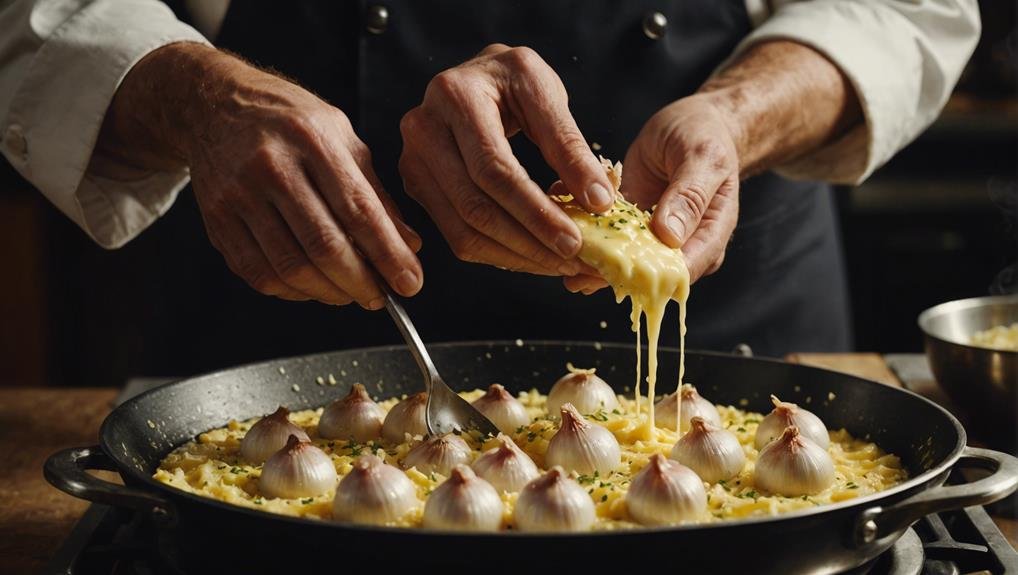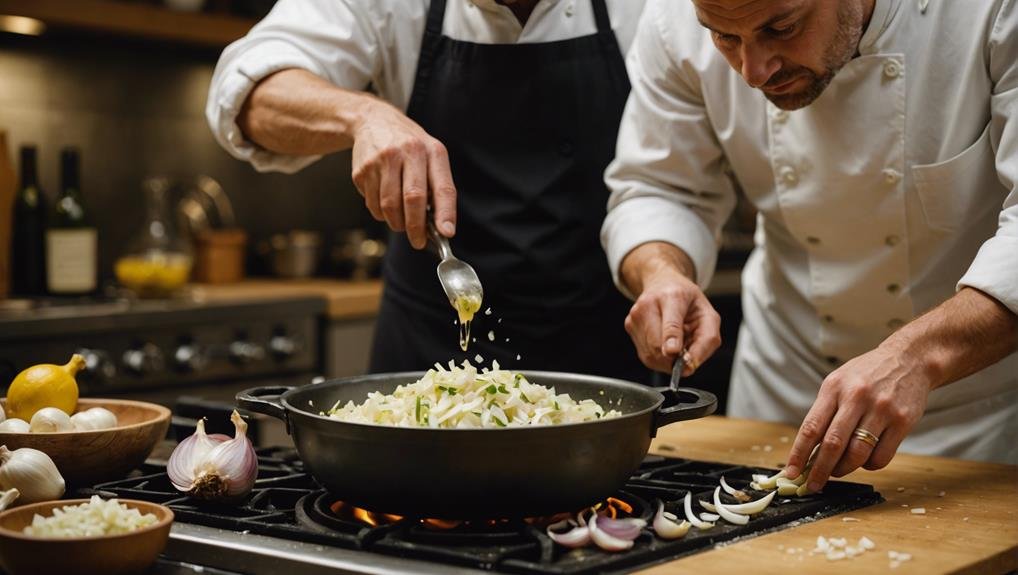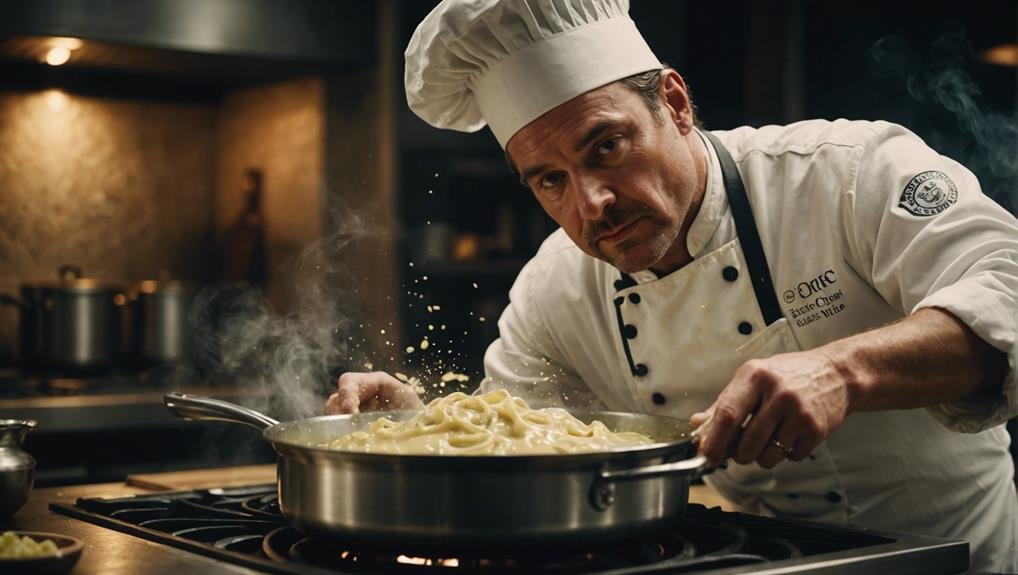White wine sauce is a popular choice among chefs for good reason. Its versatility comes from a delicate balance of ingredients and techniques used by skilled cooks.
In the ever-changing world of cooking, mastering the art of making a perfect white wine sauce can set you apart in the kitchen. This sauce has the power to introduce you to a whole new range of flavors and take your dishes to a level of elegance that will have your diners coming back for more.
Understanding the Components of a Dish

When preparing a meal, it's important to think about the key components like starch options such as pasta, rice, or potatoes, and protein choices like chicken, fish, pork, red meat, or tofu. Each part plays a crucial role in creating a balanced and satisfying dish. Starches provide the needed carbohydrates for energy, while proteins offer essential nutrients for muscle growth and repair.
By combining these elements carefully, you can achieve a delicious blend of flavors and textures on your plate. Remember to cook your starch slightly underdone and finish it in the sauce for the best flavor absorption. Similarly, cook your protein in a pan, keeping it slightly undercooked to ensure a juicy and tender final result.
Experiment with different pairings to find your favorite combinations and enhance your cooking skills.
Chef's Method: White Wine Sauce Recipe
When making a versatile white wine sauce, start by heating a skillet with olive oil and adding onions and carrots for depth of flavor. Here's a straightforward guide to help you perfect this essential sauce:
- Sauté Aromatics: Begin by sautéing onions, carrots, and a splash of olive oil for a flavorful base.
- Enhance Flavors: Add garlic, celery, or shallots to amplify the taste profile.
- Choose Your Wine: Opt for white wine for a lighter sauce or red wine for a richer flavor.
- Thicken the Sauce: Use butter or olive oil and whisk in flour to achieve the desired consistency.
- Add Fresh Herbs: Incorporate a mix of fresh herbs, adding half at the start and the rest later for a balanced taste.
- Adjust Consistency: Fine-tune the sauce's texture by adding broth, milk, or cream as needed.
Step 1: Preparing the Base Ingredients

Start by heating a skillet and adding a bit of olive oil, onions, and carrots to create a tasty base for your white wine sauce. Using the same pan ensures you capture all the flavorful fat and cooked meat bits for maximum taste.
Remember to add butter later to avoid burning and enhance the buttery flavor. If you like a spicier, garlic-like taste, you can also toss in some shallots. This initial step lays the groundwork for developing a rich and fragrant base that will complement the wine and other ingredients in your sauce.
Taking the time to sauté these base ingredients properly will enhance the overall flavor and depth of your white wine sauce.
Step 2: Building Flavor With Aromatics
After preparing the basic ingredients for your white wine sauce, the next step is to add aromatics to enhance the flavor. Aromatics like garlic, celery, and shallots are key to developing rich flavors in your sauce.
It's important to time their addition correctly; add garlic after onions have released moisture to avoid burning, and incorporate celery after the other aromatics have browned. Sweating onions before browning them helps bring out their natural sweetness. Be careful with garlic as it can burn easily, so add it after the onions.
These aromatic ingredients work together to elevate the taste of your white wine sauce and create a delicious depth of flavor.
Step 3: Creating the White Wine Sauce

When making a White Wine Sauce, you start by pouring white wine into the pan to enhance the flavor.
You can opt for white wine for a light sauce or red wine for a richer one.
Deglazing the pan helps to scrape off flavorful browned bits and clean the pan.
For an extra depth of flavor, consider adding a splash of wine or spirit vinegar. This step adds complexity to your sauce and elevates its taste profile.
Frequently Asked Questions
Can I Use Red Wine Instead of White Wine for the White Wine Sauce?
Yes, you can opt for red wine instead of white wine in your white wine sauce recipe. Using red wine will impart a deeper color and a more robust flavor to your sauce. Remember to adjust your cooking time and temperature accordingly to ensure the best results. Have fun experimenting in the kitchen!
How Can I Adjust the Thickness of the Sauce Based on My Preference?
If you want to adjust the thickness of your sauce, you can make it thicker by adding more fat/oil and flour, or make it thinner by adding more liquid. Tweak it to suit your taste preferences. Keep in mind that the consistency might alter as it cools down, so aim for the texture you prefer.
What Type of Broth Is Best to Use for a Dark Sauce With Red Meat?
When preparing a dark sauce to pair with red meat, beef broth is the ideal choice. Its robust flavor complements the richness of the meat, adding depth to the sauce for a truly savory outcome. Incorporate beef broth into your recipe to enhance the overall taste of your dish.
Should I Use Fresh or Dry Herbs for the Best Flavor in the Sauce?
Using fresh herbs in your sauce is key for enhancing its flavor. Fresh herbs bring a vibrant and rich taste to your dish. You can also sprinkle some dried herbs towards the end of cooking to intensify the flavor. Remember, the longer the sauce sits, the more the fresh herb flavors will deepen and intensify.
Can I Substitute Butter With Olive Oil for a Lighter Italian Flavor in the Sauce?
For a lighter Italian twist, you can swap out butter for olive oil in your sauce. Olive oil brings a unique flavor that works wonderfully in Italian dishes. Adjust the amounts based on how rich you want the sauce to be. Have fun exploring different flavors as you cook!
Conclusion
Mastering the technique of creating a white wine sauce can truly enhance your cooking skills. Picture the delight of impressing your guests with a well-balanced sauce that elevates the flavors of your dish.
Whether you're preparing a simple pasta dish or a gourmet meal, adding this sauce can elevate your culinary creations. So, grab a bottle of white wine and start experimenting in the kitchen!